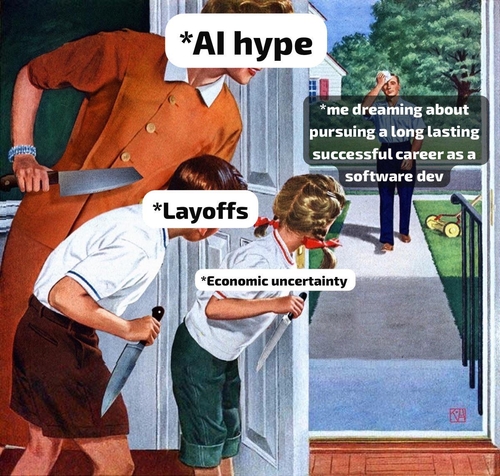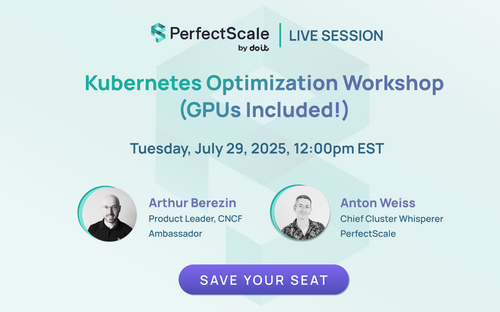🔗 View in your browser. | ✍️ Publish on FAUN.dev | 🦄 Become a sponsor
DevOpsLinks
#DevOps #SRE #PlatformEngineering
📝 The Opening Call
Data center costs are climbing faster than your code after a hasty npm install, and AI could be the culprit. Meanwhile, Amazon DynamoDB's global tables are stepping up to keep your data solid through clouds bursting and pods crashing, while Netflix sharpens its global observability for when binging matters most.
🌍 Multi-Region Strong Consistency in Amazon DynamoDB
💹 Data Center Costs Surge Amidst Capacity Drought
📽️ Netflix's Hidden Title Launch Magic
🚄 Driving Content Delivery Efficiency Through OCAs
🧩 Hidden Complexities in Distributed SQL
🕶️ Kiro: The Anti "Vibe Coding" Build
🔍 Local Chatbot RAG with FreeBSD Knowledge
🛡️ Robust WAF Protection for the Web
🐋 Looking for a Kaniko alternative? Try werf
🔧 NGINX Basics: The Lean, Mean Machine
Crack open those dev mysteries and let them fuel your next breakthrough.
Have a great week!
FAUN Team
🌍 Multi-Region Strong Consistency in Amazon DynamoDB
💹 Data Center Costs Surge Amidst Capacity Drought
📽️ Netflix's Hidden Title Launch Magic
🚄 Driving Content Delivery Efficiency Through OCAs
🧩 Hidden Complexities in Distributed SQL
🕶️ Kiro: The Anti "Vibe Coding" Build
🔍 Local Chatbot RAG with FreeBSD Knowledge
🛡️ Robust WAF Protection for the Web
🐋 Looking for a Kaniko alternative? Try werf
🔧 NGINX Basics: The Lean, Mean Machine
Crack open those dev mysteries and let them fuel your next breakthrough.
Have a great week!
FAUN Team
⭐ Patrons
info.perfectscale.io
Running Kubernetes efficiently is already complex. Add LLM workloads, and suddenly you're dealing with expensive GPU nodes that can't afford to sit idle.
Join Arthur Berezin (VP Product at PerfectScale by DoiT) and Anton Weiss (Chief Cluster Whisperer) as they share a clear, proven approach to optimizing Kubernetes costs without compromising reliability.
You'll learn:
→ How to manage CPU, memory, and GPU resources per workload.
→ How to align these with autoscaling for maximum efficiency.
✅ Clear code examples. ✅ Real use cases. ✅ No fluff.
Only 50 seats available. Register now !
ℹ️ News, Updates & Announcements
aws.amazon.com
Amazon EC2 P6e-GB200 UltraServers roar to life with NVIDIA Grace Blackwell. Imagine a beast with 360 petaflops of FP8 compute and 13.4 TB of high-bandwidth memory. Hungry for speed? They deliver, with 28.8 Tbps EFAv4 networking, ensuring lightning-fast data flow. And the GPUs chat like old friends, thanks to GPUDirect RDMA. Got a trillion-parameter AI project? These servers laugh in the face of big tasks.
aws.amazon.com
Amazon DynamoDB just rolled out a nifty trick: multi-Region strong consistency. It's tailor-made for zero RPO junkies. Even during those pesky Region meltdowns, your data stays fresh as a daisy. Take your pick—go grand with three full replicas or skimp on cash with two replicas and a witness.
kiro.dev
Kiro flips "vibe coding" into slick, production-ready apps. How? Specs nail down every requirement, hooks lock in code consistency, and assumptions hang in the open. The real trick? Kiro pumps out design docs, tweaks tests on its own, and lays down the law on code standards—all without muddling the flow in your VS Code groove.
networkworld.com
Data center prices are through the roof, particularly in spots like Northern Virginia and Amsterdam. Vacancies languish at a scant 1.9%. Blame it on AI's ravenous demand. Hyperscalers and AI outfits are feasting on capacity, crafting an "artificial scarcity" that echoes the real estate scene. Some folks murmur about a bubble waiting to burst. What's the culprit? AI workloads slurp up triple the juice. Enterprises must revise their financial playbooks. The sharp ones are dodging to Tier-2 markets like Des Moines. They're pulling out playbooks filled with shorter leases and hybrid cloud setups, maneuvering through this treacherous terrain until the forecast calls for clear skies post-2027.
🐾 From FAUNers
faun.dev
werf jazzes up Kubernetes deployments with reproducible, rootless builds via Buildah or BuildKit. It slots right into CI/CD powerhouses like GitLab and GitHub Actions.
faun.pub
Platform Engineers—they’re the unsung maestros behind the curtain, designing Internal Developer Platforms. Not just tool jockeys. Their true magic? Developers sprint, uncluttered, down a streamlined "golden path," shipping brilliance at warp speed.
faun.pub
AWS WAF and CloudFront team up to block SQL injections and XSS attacks. They don't just stop threats; they also log everything with precision. Together, they're the web's unsung heroes.
faun.pub
Terraform functions revolutionize your infrastructure code. They wield power with data manipulation, input validation, and dynamic naming. Picture yourself flattening lists or merging maps with ease. Adopt them for a cleaner, scalable setup that marries functional programming's flair with cloud infrastructure's muscle.
faun.pub
Terraform, your trusty sidekick for taming infrastructure, makes setups seamless. But don't let your guard down: there's a sneaky race condition lurking between S3 Bucket Versioning and Object Lock, ready to ignite havoc. Keep secrets safe with HashiCorp Vault. Fetch them live and keep those state files free of snoopers.
faun.pub
Platform Engineering slices through software mayhem with the finesse of a sous chef. It crafts the tools and systems, letting developers whip up those killer apps like they're in a gourmet kitchen.
🔗 Stories, Tutorials & Articles
oluwateezzy03.medium.com
NGINX isn't just a web server; it's the lean, mean, speed machine you've always wanted. But, frankly, it's best understood by diving in and getting your hands dirty. Break stuff. Fix stuff. Repeat. That's how you hit pro status.
dzone.com
Time series databases optimize storage, retrieval, and analysis of time-stamped data, offering high-speed ingestion and specialized analytics. TSDBs are designed for efficiency and scalability, outperforming traditional databases in time-centric applications.
evanhahn.com
Spike it, then polish it: Jump into rough draft coding. Discover those hidden gems. Avoid crafting convoluted code castles. Beware distractions: Use timers and programming partners like life rafts in a code swamp.
netflixtechblog.com
RAW Hollow, Netflix's brainy in-memory database, torches Tudum's update lag by jamming full datasets right into app memory. This move guarantees O(1) access time and rock-solid read-after-write consistency while flexing to juggle a whopping 100 million records.
netflixtechblog.com
Netflix’s Open Connect program rewires the streaming game. Enter Open Connect Appliances (OCAs): these local units demolish latency, curb cache misses, and pump up streaming power. How? By magnetizing servers with network proximity wizardry. Meanwhile, Kafka rolls up its sleeves, juggling low-latency logs like a pro. Real-time miss metrics? Covered. A slick ballet of data that refines content delivery and spruces up user experiences worldwide.
cncf.io
Policy as Code (PaC) isn't just another tech trend. It’s shaking up platform engineering. Get instant feedback, dodge production disasters, and automate compliance. It’s like a security blanket for self-service platforms. Enforcing those "golden paths" might actually keep things safe while innovation skyrockets and configuration drift gets an overdue haircut.
dzone.com
Technical debt from outdated software slows down businesses, costing over $2.4 trillion annually in the U.S. Using AI in SaaS can smartly reduce debt, but beware AI-induced debt by implementing rigorous oversight and governance principles like T.R.U.S.T. Responsible AI integration enhances SaaS scalability and maintenance, allowing for predictive insights that prevent future technical debt, making it vital in modern SaaS architecture.
infoq.com
Netflix's Title Launch Observability shifts focus from just keeping systems ticking over to actually catching the stuff that viewers care about. It sniffs out those pesky glitches before anything hits the screen. A nifty "time travel" feature allows engineers to peek into the future UI, playing time traveler to catch hiccups before titles grace your watchlist.
hackacad.net
Deepseek-r1 crushes it for FreeBSD chatbots running locally on hefty GPUs. It dishes out adjustable precision, but don’t expect rubber-stamped approval.
blog.vegasecurity.com
Distributed SQL engines shine when it comes to wrangling scattered data. Their secret weapons? Push-down filters and TopN tricks that slash data transfer and shrink processing time. They deftly juggle complex queries from multiple sources, without the whole data mess piling up. Even the humdinger of operations, like distinct counts, doesn't faze them—they optimize like pros.
⚙️ Tools, Apps & Software
github.com
A tool for managing project collaboration between humans and AI Agents in a git ecosystem
🤔 Did you know?
Did you know that GitHub doesn’t use any secret VM booting tricks, but instead dramatically cuts CI/CD startup times by maintaining warm runner pools? These pools hold pre-configured VMs or containers ready with common dependencies, so jobs can begin in 5–10 seconds instead of minutes. As demand rises, additional runners are spun up, balancing developer speed, resource flexibility, and cost—all while avoiding cold-start delays.
🤖 Once, SenseiOne Said
"In software, the more tools we have to automate trust, the more our trust depends on the tools we automate."
— Sensei
— Sensei
👤 This Week's Human
Meet Bogdan Marian , Technical Director at Riverbed Technology. With over 20 years in software development across diverse sectors, Bogdan leads cutting-edge projects, such as an observability & monitoring SaaS product using micro-services on Azure. His commitment to fostering healthy engineering practices and his contributions to open source software since 2008 underscore his deep passion for technology. Known for his advocacy of continuous integration and delivery, Bogdan's dedication extends beyond code as a public speaker sharing insights at Romanian IT conferences.
😂 Meme of the week


